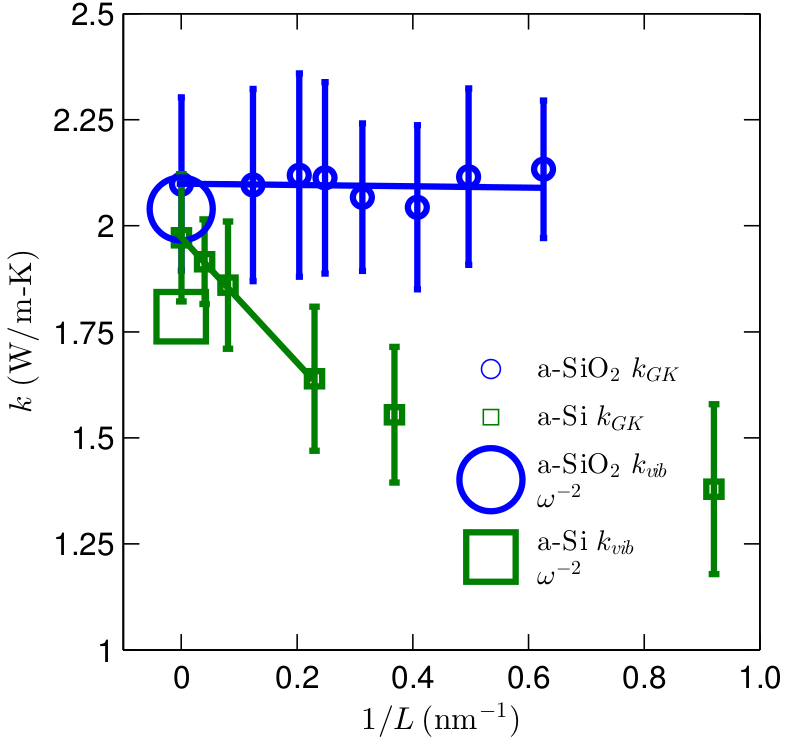Jason Larkin's PhD Projects
Vibrational Mean Free Paths and Thermal Conductivity Accumulation Functions for Amorphous Materials (in progress)
Building on the work and analysis in the project: Predicting Alloy Vibrational Mode Properties using Lattice Dynamics Calculations, Molecular Dynamics Simulations, and the Virtual Crystal Approximation, we studied the thermal conductivity of amorphous silicon (a-Si) and silica (a-SiO2) by quantifying the contributions from propagating ( phonon-like, kpr) and non-propagating (diffuson, kdiff) vibrational modes to predict the total vibrational thermal conductivity, kvib = kpr + kdiff. The propagating contribution kpr is due to phonon-like vibrational modes with long mean free paths (MFPs); energy is transported over long distances before scattering. The motivation for this study is recent experimental measurements by Regner at al. of the thermal conductivity as a function of the vibrational mean free paths.
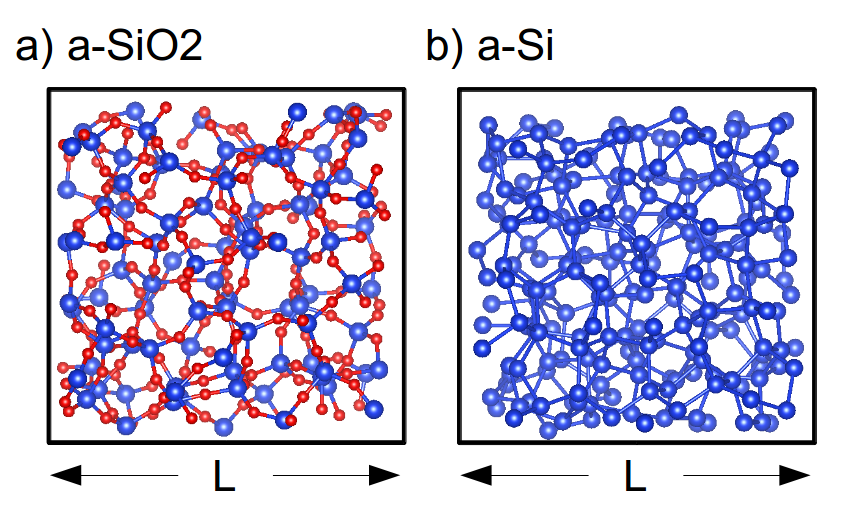
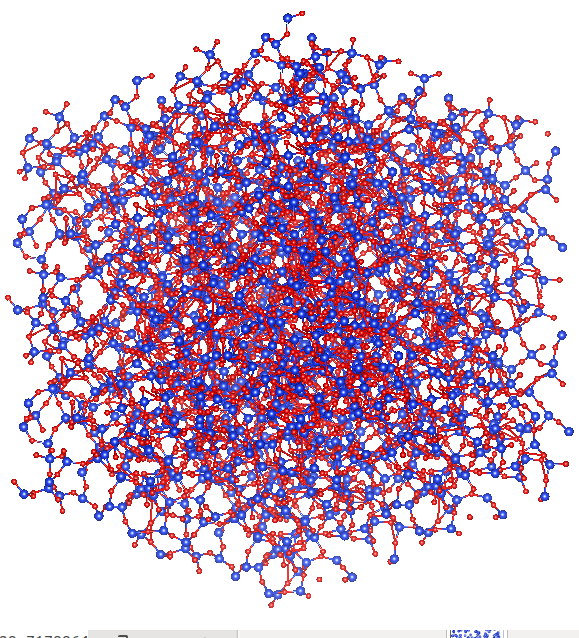
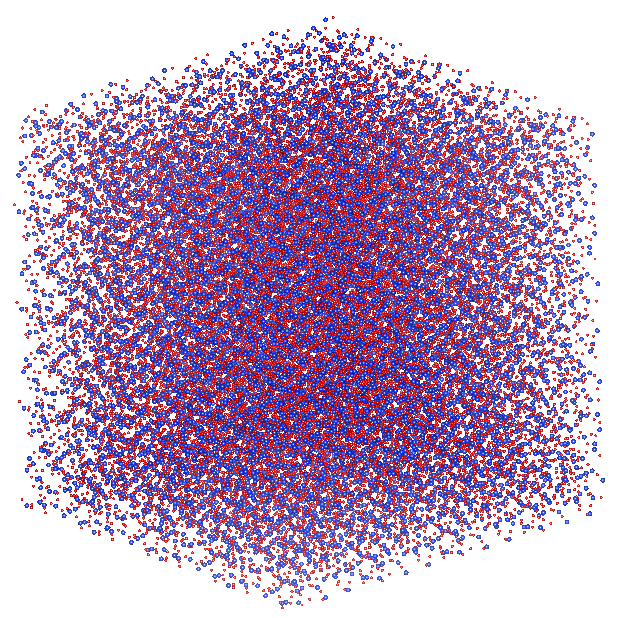
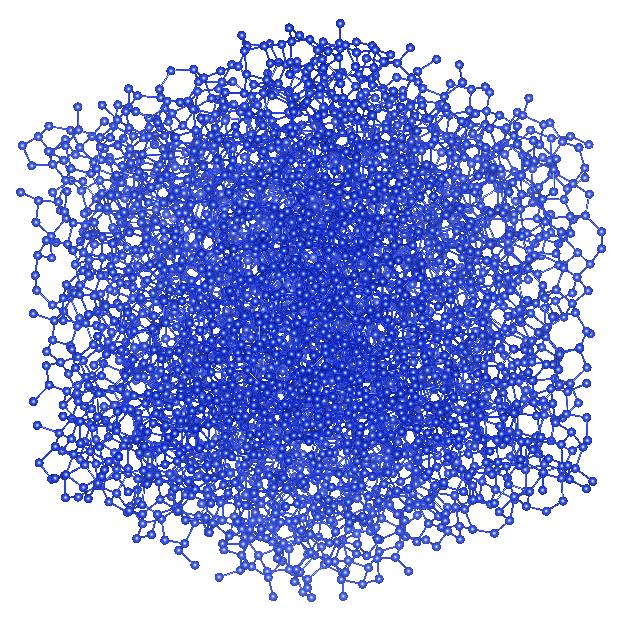
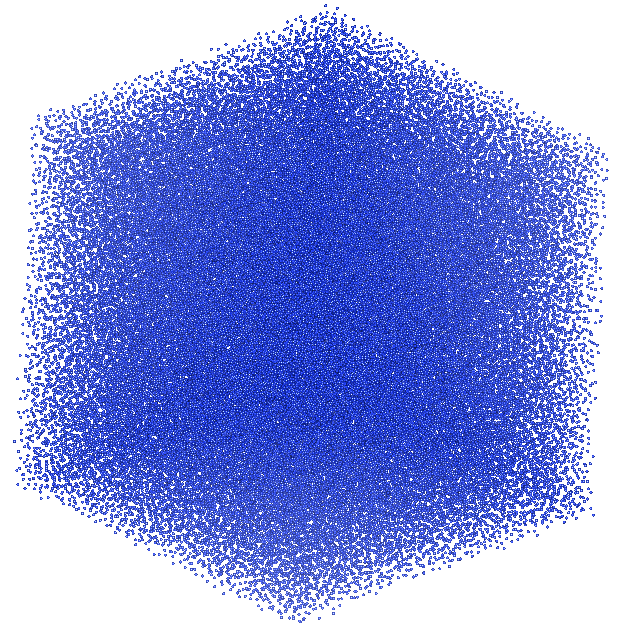
Using these model structures of a-SiO2 and a-Si, we perform the thermal conductivity analysis using lattice dynamics (LD) calculations and molecular dynamics (MD) simulations.
